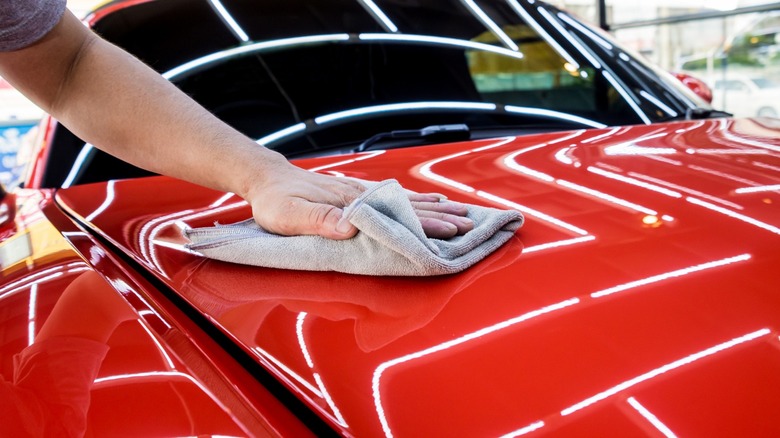
Roman Zaiets/Shutterstock
Few things give a car more character than its paint and finish. Whether it came off the lot in that color, or you changed it somewhere along the way, good. Well-maintained body paint could really make your car stand out. The catch is that keeping a car’s paint completely scratch-free is challenging — some would say impossible. As long as the car gets out onto the road in the dust and drives, micro rocks will rub against the paint and scratch it. Your job is to ensure that any scratches on your car don’t create long-term issues.
While there’s nothing you can do to stop natural abrasion, there might be some habits you have that are ruining your paint job. Some of these habits seem harmless, but car paint is extremely sensitive, and even the slightest abrasion can prove an indelible error. You might be able to get away with these mistakes if you have a car in silver, gray, or white, but owners with black cars or cars with metallic finishes know the struggle.
DIY methods for removing scratches might work, but prevention is the best solution. Here are some of the things you might be doing to mar your car’s paint.
Placing objects on the car
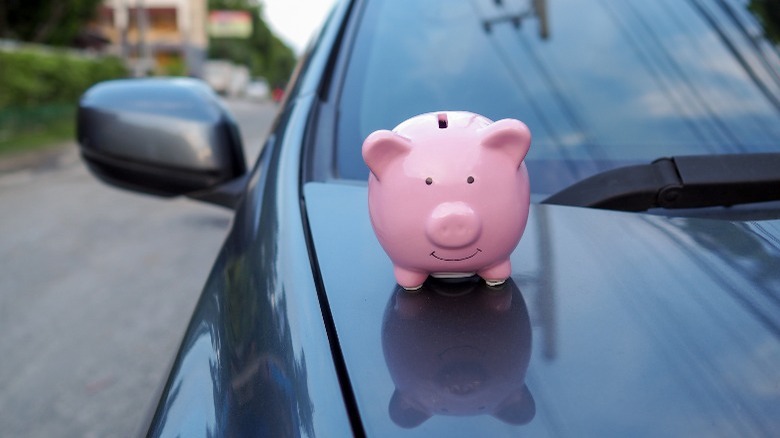
Inthon Maitrisamphan/Shutterstock
We’ve all been there; you just left the store and have some shopping bags in your hand. You need to grab your keys out of your pocket, but instead of placing the bags on the ground, you put them on the roof of your car. As harmless as shopping bags might seem, they sometimes have sharp edges that could scratch the paint when you place and remove them. Additionally, the fact that you drove to the store means that there’s at least a thin layer of dust that the bag could smear into your paint as you place items on the surgace and lift it from the vehicle’s body.
This theory applies to any decently heavy object or something with a considerably hard edge of any sort. Handbags, keys (and keychains), water bottles, phones, sunshades, the list is endless. Almost anything with the right amount of pressure will scratch your car — and if it’s metal, that makes it even riskier. You must be mindful while carrying out your day-to-day activities near your car.
Drying your car without a microfiber cloth (or drying it too hard)
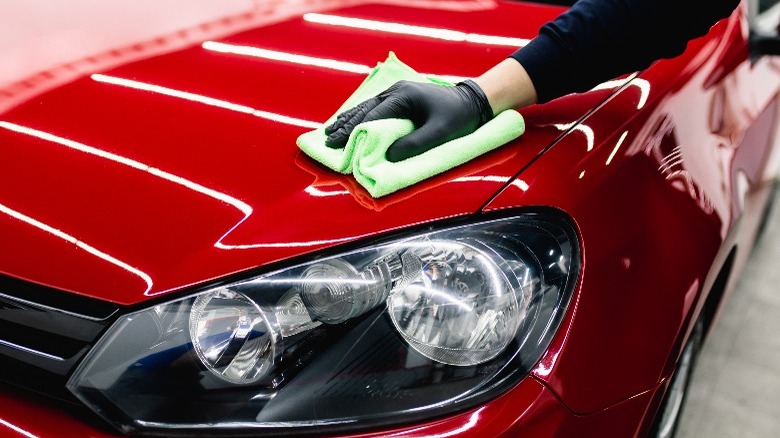
hedgehog94/Shutterstock
After washing and rinsing your car, the inclination is to dry it. If you leave standing water on your car’s paint, it will leave ugly watermarks. For you to have a completely clean, shiny car, you’ll want to dry it off. If you use a cloth that isn’t soft and absorbent enough, like a microfiber cloth, its rougher texture and poor absorbency will act like sandpaper. Not only is microfiber cloth soft, but its absorbent nature will act like a magnet and pull dirt and moisture away from the paint surface. That’s what makes it such one of the important car cleaning tools you should have.
However, microfiber towels aren’t some kind of magical car-drying tool, they can still scratch your finish if you’re not careful. If you dry your car too hard, you might force some dirt on the microfiber cloth to scratch the paint. Use a light hand and pull it gently across the surface in the direction of your car’s contours. Avoid circular motions because they could cause swirl marks.
To be extra safe, you can abandon drying towels completely and use an air dryer. The forced air can push the water off the car and remove the possibility of water spots. Just make sure to avoid kicking up rocks and dust in the process.
Leaning or sitting on the car (especially while it’s dusty)

SofikoS/Shutterstock
Imagine while waiting to pick up a friend, you pop out and decide to just lean on your car’s door. If we zoomed into that interaction between your clothes and your car with some kind of microscopic lens, you’d see the fabric of your clothes trap the dirt and dust on the surface of your car and sandpaper it with every small movement.
Just to add a little variable to the mix, imagine you’re wearing one of those pairs of jeans with buttoned back pockets. The metal button, combined with your weight, can make very noticeable grooves into your paint. This mistake is like a combination of placing objects on your car and wiping it with a very dusty, non-microfiber towel.
You may also figure how grave it is to climb your car and sit on the hood or the trunk. Sitting on your car might reduce the size of the contact patch between you and your car (in comparison to leaning), but it increases the pressure since the car has to support your full weight. This can make grooves and scratches that cut much deeper than leaning.
Using the same cleaning tools for the wheels (and wheel wells) for the body
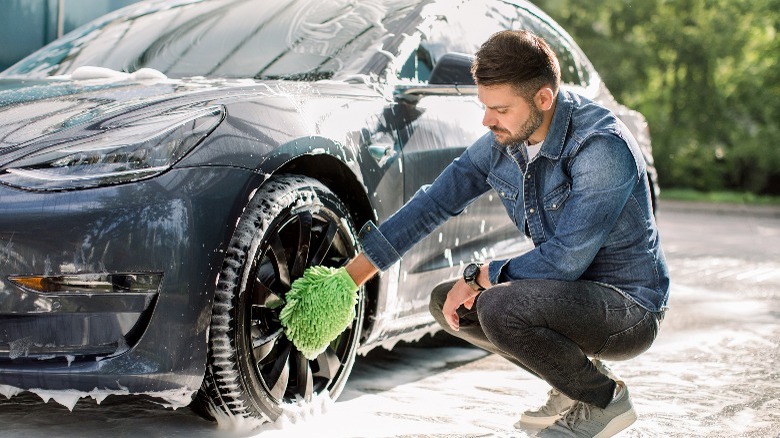
SofikoS/Shutterstock
There’s a general agreement amongst detailers that the tires and wheels must be washed first. These are the dirtiest parts of the car, and it’s best to get them out of the way before addressing the car’s body. However, there’s a risk in doing this if you’re planning to use the same dirt-packed, soapy water and washing mitts you used for the wheels on the car’s finish.
You can probably see where this is going. You cannot use the same tools you used for the wheels on the car’s body. Even if you rinse them rigorously, there’s always a chance some debris gets left on the cloth. It’s best to get a separate bucket and washing mitts for your tires to avoid scratching your car. This concept still applies if you save your wheels for last. You will not be able to rinse off every risky particle in your buckets or your mitts.
Covering your car with a car cover while it’s outside
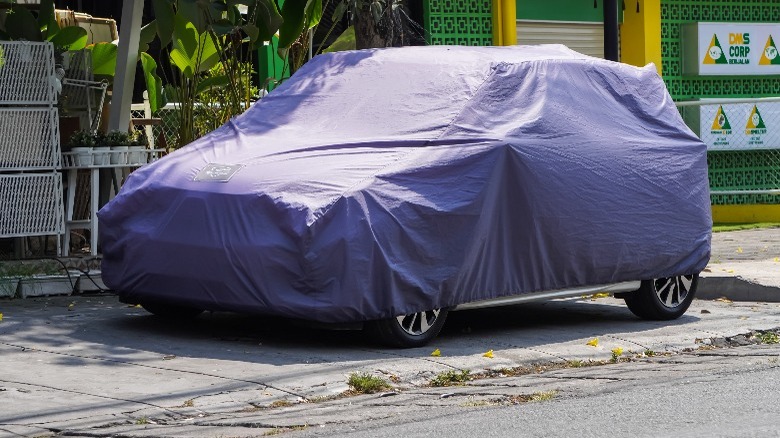
Rizky Ade Jonathan/Getty
This one might initially seem counterintuitive, but it’s worth considering. When you park your car outside, it seems logical to cover it to protect it from the elements: rain, sun, dust, and the like, right? Wrong, if you want to save your paint.
As we’ve explained previously, hard fabric on car paint often means scratches. If there’s even a thin layer of dust or debris between the car and the cover, it might lead to scratching and swirling as the cover moves.
Apart from the movement that happens when you place and remove the car cover, the wind outside can be the real culprit. Not only will this shift your car cover about, but it’s also likely to flap in the wind. As they flap, the edges of your car cover can cut into your paint. When you weigh your pros and cons, it’s easier to clean a dusty car than fix a scratched one.